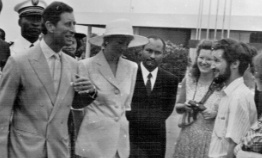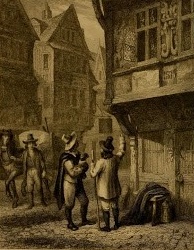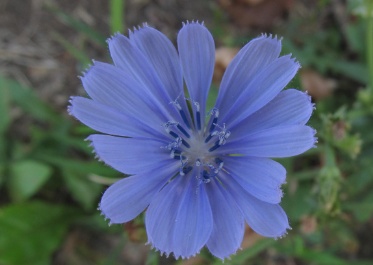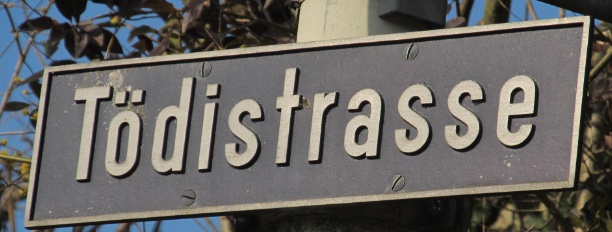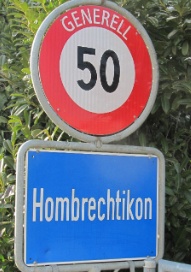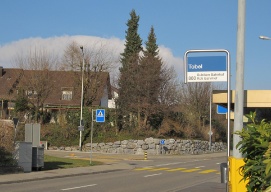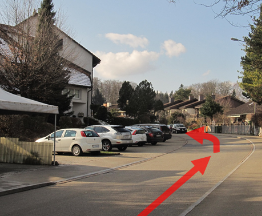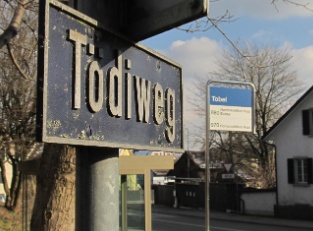November 2018
Sunday 11th November 2018
Poppy Day
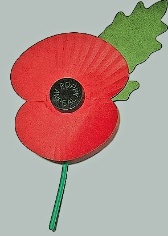
At the beginning of November a student of mine told me he had watched a football match on TV where an English team was playing. “Why,” he asked, “were the manager and trainer wearing those red flowers?” Those red flowers were poppies, and at this time of year poppies are a symbol of remembrance – that means remembering the many thousands of people who died in war, especially during the First World War.
In late October people in the UK – also in Canada, New Zealand, South Africa and a few other places – start to wear paper poppies for which they give a donation. The money they donate goes to help servicemen and servicewomen who have suffered because of fighting in wars.
The Poppy Day Appeal has been running since 1921 and its slogan is Wear your poppy with pride. It’s very important for politicians and anyone else who is in the public eye to be seen wearing their poppy at this time of year.
This link shows Mrs May receiving her poppy this year in front of Number 10 Downing Street. You can’t get more public than that.
In late October people in the UK – also in Canada, New Zealand, South Africa and a few other places – start to wear paper poppies for which they give a donation. The money they donate goes to help servicemen and servicewomen who have suffered because of fighting in wars.
The Poppy Day Appeal has been running since 1921 and its slogan is Wear your poppy with pride. It’s very important for politicians and anyone else who is in the public eye to be seen wearing their poppy at this time of year.
This link shows Mrs May receiving her poppy this year in front of Number 10 Downing Street. You can’t get more public than that.
Why the poppy?
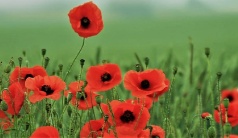
Apparently, when the countryside of northern France began to recover after the devastation of the First World War, one of the first things which grew again were masses of red poppies. And so the poppy became a symbol of remembrance, and maybe of new life and new hope.
Today, like the eleventh of November every year, is Remembrance Day, or Poppy Day as it’s often called. It was on the 11th November that the First World War came to an end after more than four years of killing and destruction. And this year of course this day has a particular significance since it marks the centenary of the end of what was known as the Great War.
What actually happened on 11th November 1918 was that under the leadership of the French Marshal Ferdinand Foch the Allies and their opponent Germany signed a document putting lay down their weapons – which was known under the solemn name of the Armistice. They signed the document in the early hours of the morning, but Armistice took effect at 11 o’clock in the morning (French time) – making this event (the eleventh hour of the eleventh day of the eleventh month) one of the easiest dates in history to memorise.
Today, like the eleventh of November every year, is Remembrance Day, or Poppy Day as it’s often called. It was on the 11th November that the First World War came to an end after more than four years of killing and destruction. And this year of course this day has a particular significance since it marks the centenary of the end of what was known as the Great War.
What actually happened on 11th November 1918 was that under the leadership of the French Marshal Ferdinand Foch the Allies and their opponent Germany signed a document putting lay down their weapons – which was known under the solemn name of the Armistice. They signed the document in the early hours of the morning, but Armistice took effect at 11 o’clock in the morning (French time) – making this event (the eleventh hour of the eleventh day of the eleventh month) one of the easiest dates in history to memorise.
The cenotaph
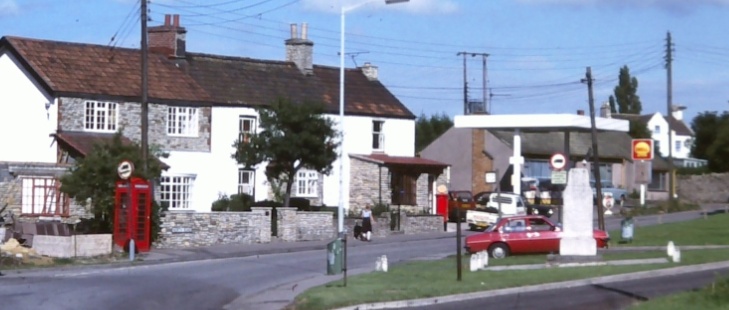
If you read my journal entry for 20th October 2018 you will have seen a picture of village green in Stoke Gifford, the village just outside Bristol where I grew up. Here is another picture of another part of the green, as it was in the 1970s.
You might be able to pick out familiar features like the red telephone box, the red letter box in front of the Post Office and the Shell petrol station. But that white pillar in front of the petrol station is the Cenotaph or war memorial. Most town and villages have such a cenotaph. It lists the names of the people from village who died in active service during the world wars.
From my childhood I remember this as being the scene of an emotional ceremony each Remembrance Day (the Sunday nearest to the 11th November). First they laid a wreath of poppies at the cenotaph and then marched with their flag to the church. I remember them, old soldiers, some of them who had fought in the First World War, filing slowly into church, silent except for the sound of their medals, clinking on their chests. Then at precisely 11 o’clock, there were two minutes of silence (not only in our place, but all over the country) at the end of which they recited “We will remember them”.
You might be able to pick out familiar features like the red telephone box, the red letter box in front of the Post Office and the Shell petrol station. But that white pillar in front of the petrol station is the Cenotaph or war memorial. Most town and villages have such a cenotaph. It lists the names of the people from village who died in active service during the world wars.
From my childhood I remember this as being the scene of an emotional ceremony each Remembrance Day (the Sunday nearest to the 11th November). First they laid a wreath of poppies at the cenotaph and then marched with their flag to the church. I remember them, old soldiers, some of them who had fought in the First World War, filing slowly into church, silent except for the sound of their medals, clinking on their chests. Then at precisely 11 o’clock, there were two minutes of silence (not only in our place, but all over the country) at the end of which they recited “We will remember them”.
My grandfather
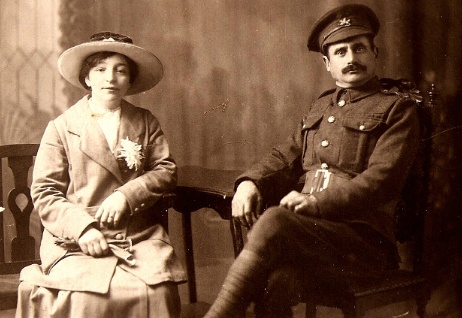
My own grandfather, Alfred Sturgess, was one person who survived the First World War. This photo, taken, I guess, in 1919, shows him and his bride Esther, my grandmother, at their wedding. He’s dressed in soldier’s uniform: notice the puttees on his legs.
He was a survivor, but only just. Like many others he was traumatised by his war-time experiences. He did find work as a farm labourer, but poor physical and mental health drove him from one farm to another. He died in 1939, just before the outbreak of the Second World War.
He was a survivor, but only just. Like many others he was traumatised by his war-time experiences. He did find work as a farm labourer, but poor physical and mental health drove him from one farm to another. He died in 1939, just before the outbreak of the Second World War.
Front page story
Look back to 1665: the Plague Year
Contact
If you’re interested in English lessons or translation and checking services, please feel free to contact me in the language of your choice - English, French, German or even Lingala!
Here are my details:
Here are my details:
Mobile
078 609 56 51
+41 78 609 56 51
+41 78 609 56 51
Location
Tödistrasse 9, 8634 Hombrechtikon
(New address from 24th March 2018)
(New address from 24th March 2018)
If you are travelling from Rüti / Wolfhausen, drive past the Hombrechtikon place-name sign for about 300 metres and turn right into Tödistrasse, just before the Tobel bus stop.
Approaching from Hombrechtikon
If you are approaching from the centre of Hombrechtikon, follow the signs to Rüti. At the Tobel junction (the Methodist Church is on the left) turn left. Tödistrasse is the next turning on the left, just past the Tobel bus stop.
The entrance to our new flat is about 100 metres from the junction with Rütistrasse, on the left-hand side of the road.
The house number is number 9 and we are on the first floor.
There are a few visitor’s parking bays a short distance beyond the entrance, on the left.
There are a few visitor’s parking bays a short distance beyond the entrance, on the left.
Arriving by bus
If you arrive by bus from Bubikon, get off the bus at Tobel and follow Tödiweg until you get to Tödistrasse. Our house is on the right.


